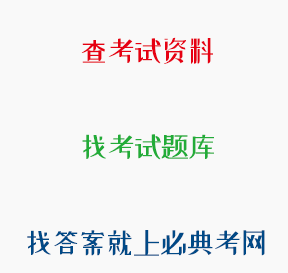正确答案:
题目:材料:
在艺术创作中,往往有一个重复和变化的问题:只有重复而无变化,作品就必然单调枯燥;只有变化而无重复,就容易陷于散漫凌乱。重复与变化的统一,在建筑物形象的艺术效果上起着极其重要的作用。古今中外的无数建筑,除去极少数例外,几乎都以重复运用各种构件或其他构成部分作为取得艺术效果的重要手段之一。历史中最杰出的一个例子是北京的明清故宫。从天安门到端门、午门是一间间重复着的"干篇一律"的朝房。再进去,太和门和太和殿、中和殿、保和殿成为一组的"前三殿"与乾清门和乾清宫、交泰殿、坤宁宫成为一组的"后三殿"的大同小异的重复,就更像乐曲中的主题和"变奏";每一座的本身是许多构件和构成部分(成句、乐段)的重复;而东西两侧的廊、庑、楼、门,又是比较低微的,以重复为主但亦有相当变化的"伴奏"。然而整个故宫,它的每一个组群,每一个殿、阁、廊、门却全部都是按照明清两朝工部的"工程做法"的统一规格、统一形式建造的,连彩画、雕饰也尽如此,都是无尽的重复。我们完全可以说它们"干篇一律"。但是,谁能不感到,从天安门一步步走进去,就如同置身于一幅大"手卷"里漫步:在时间持续的同时,空间也连续着"流动"。那些殿堂、楼门、廊庑虽然制作方法干篇一律,然而每走几步,前瞻后顾,左睇右盼,那整个景色,轮廓、光影,却都在不断地改变着;一个接着一个新的画面出现在周围,干变万化。空间与时间,重复与变化的辩证统一在北京故宫中达到了最高的成就。翻开一部世界建筑史,凡是较优秀的个体建筑或者组群,一条街道或者一个广场,往往都以建筑形象重复与变化的统一而取胜。说是干篇一律,却又干变万化。每一条街都是一轴"手卷"、一首"乐曲"。干篇一律和干变万化的统一在城市面貌上起着重要作用。
(摘编自梁思成《千篇一律与千变万化》)
问题:
(1)请简要概括重复与变化的辩证统一关系。(4分)
(2)简要分析北京故宫的建筑在"千篇一律"与"千变万化"结合中取得的艺术效果。(10分)
一律的殿堂、楼门、廊庑的制作方法和宫殿格局,从不同的角度看过去,一个接着一个新的画面出现在周围,景色也是干变万化的。一个好的建筑作品是重复与变化的辩证统一。(2分)(2)故宫从天安门到端门、武门是一间间重复的朝房,太和门和太和殿、中和殿、保和殿成为一组的"前三殿"与乾清门和乾清宫、交泰殿、坤宁宫成为一组的"后三殿"的大同小异的重复,每一座的本身是许多构件和构成部分(成句、乐段)的重复,东西两侧的廊、庑、楼、门,又是比较低微的,以重复为主。故宫,它的每一个组群,每一个殿、阁、廊、门却全部都是按照明清两朝工部的"工程做法"的统一规格、统一形式建造的,连彩画、雕饰也尽如此,都是无尽的重复。重复的宫殿格局使整个宫殿看上去如一首乐曲,整齐而宏达,但是从干篇一律的宫殿中走过,在时间和空间的重复中,人们以一定的审美心境去欣赏的时候,会发现故宫的整个景色,轮廓、光影,却都在不断地改变着。(6分)故宫融合千篇一律和千变万化,将两者有机地统一起来,使故宫如艺术、如音乐一样,造就了故宫宏达而细腻的统一整体,也使故宫成为建筑史上将变化与重复的关系融合在一起的优秀典范。(4分)
查看原题 查看所有试题
学习资料的答案和解析:
[单选题]"推进素质教育,培养适应21世纪现代化建设需要的社会主义新人",是在( )中提出的。
1999年全国教育代表大会
解析:1999年全国教育代表大会上《中共中央、国务院关于深化教育改革,全面推进素质教育的决定》提出的要求是:"推进素质教育,培养适应21世纪现代化建设需要的社会主义新人。"
[单选题]张老师喜欢搞突然袭击,经常在学生没有准备的情况下进行考试测验,根据桑代克的学习理论,张老师的做法违背了学习原则中的( )。
准备律
解析:桑代克提出了学习的准备律、练习律和效果律。准备律是指联结的加强或削弱取决于学习者的心理准备和心理调节状态。张老师"突然袭击"使学生缺乏准备,因此违背了学习原则的准备律。
[多选题]狭义的德育是指家庭德育。( )
解析:狭义的德育是指学校德育。
[单选题]22.请阅读Passage 2,完成第1~5小题。
Passage 2
As regards social conventions,we must say a word about the well-known English class system.This is an embarrassing subject for English people,and one they tend to be ashamed of,though during the present century class-consciousness has grown less and less,and the class systemless rigiD.But it still exists below the surface.Broadly speaking,it means there are two classes,the“middle class”and the“working class”.(We shall ignore for a moment the old“upper class”,including the hereditary aristocracy,since it is extremely small in numbers;but some ofits membershave the right to sit in the House of lords,and some newspapers take surprising interest in theirprivate life.) The middle class consists chiefiy of well-to-do businessmen and professional people of all kinds.The working class consists chiefiy of manual and unskilled workers.
The most obvious difference between them is in their accent.Middle-class people use slightlyvarying kinds of“received pronunciation”which is the kind of English spoken by BBC announcers and taught to overseas pupils.Typical working-class people speak in many different local accentswhich are generally felt to be rather ugly and uneducateD.One of the biggest barriers of social equality in England is the two-class education system.To have been to a so-called“public school”immediately marks you out as one ofthe middle class.The middle classes tend to live a more formallife than working-class people,and are usually more cultured.Their midday meal is“lunch”andthey have a rather formal evening meal called“dinner”,whereas the working man's dinner,if hisworking hours permit,is at midday,and his smaller,late-evening meal is called supper.
As we have said,however,the class system is much less rigid than it was,and for a longtime it has been government policy to reduce class distinctions.Working-class students very commonly receive a university education and enter the professions,and working-class incomeshave grown so much recently that the distinctions between the two classes are becoming less andless clear.However,regardless of one's social status,certain standards ofpoliteness are expected ofeverybody,and a well-bred person is polite to everyone he meets,and treats a laborer with the samerespect he gives an important businessman.Servility inspires both embarrassment and dislike.Eventhe word “sir”,except in school and in certain occupations (e.g.commerce,the army,etc.) soundstoo servile to be commonly used.
The middle class mainly refers to people_______.
who are prosperous businessmen or who work in some professions
解析:细节题。短文第一段倒数第二句指出“The middle class consists chiefly ofwell-to-do businessmen and professional people of all kinds.”,即中产阶级主要包括富有商人和各种专业人士。故本题D项正确。

 川公网安备 51012202001360号
川公网安备 51012202001360号